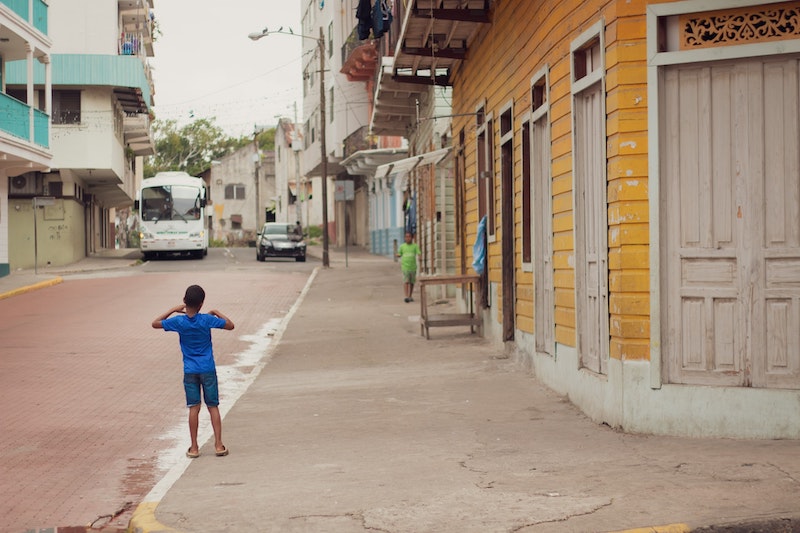Addressing Human Trafficking in Panama
 In 2019, in Panama, a country in Central America, authorities identified 61 potential human trafficking victims. Out of the 61 victims, sex trafficking victims accounted for 33, labor trafficking victims accounted for 26 and the remaining two victims endured exploitation in “other forms of trafficking.” In comparison, in 2020, authorities identified only six victims — three sex trafficking victims, one labor trafficking victim and two victims of “slavery.” The U.S. Department of State provides insight into the steps the Panamanian government is taking to address human trafficking in Panama.
In 2019, in Panama, a country in Central America, authorities identified 61 potential human trafficking victims. Out of the 61 victims, sex trafficking victims accounted for 33, labor trafficking victims accounted for 26 and the remaining two victims endured exploitation in “other forms of trafficking.” In comparison, in 2020, authorities identified only six victims — three sex trafficking victims, one labor trafficking victim and two victims of “slavery.” The U.S. Department of State provides insight into the steps the Panamanian government is taking to address human trafficking in Panama.
How Panama Compares to Other Countries
In 2016, the International Labour Organization (ILO) estimated that there were 24.9 million victims of human trafficking across the world. Since then, the ILO has not followed up with new estimates, but it is likely that the number has increased, especially with the onset of the COVID-19 pandemic, which increased people’s economic vulnerabilities, resulting in higher susceptibility to exploitation. Traffickers target victims of all ages and genders for many reasons but the three most common types of human trafficking are for the purpose of sex work, debt bondage and forced labor.
The U.S. Department of State produces annual country-specific Trafficking in Persons Reports to assess the progress of countries in eliminating human trafficking. Countries that completely meet the minimum standards of the U.S. Trafficking Victims Protection Act (TVPA) are classified as Tier 1 countries. The standards assess steps taken to protect victims of trafficking, prevent instances of trafficking and prosecute traffickers.
The 2021 Trafficking in Persons Report on Panama classifies Panama as a Tier 2 country, meaning it is not completely meeting the minimum standards of the TVPA but is actively working toward that goal.
According to trafficking reports from the U.S. Department of State, human trafficking in Panama is most common in bars and brothels. However, official reports note an increase in human trafficking offenses taking place in beauty salons and spas as well as private residences and rented homes.
It is also very common for other Central Americans to be trafficked into Panama when passing through the Panama Canal. As of 2020, foreign women accounted for most identified human trafficking victims in Panama.
Panama’s Shortcomings
The most significant obstacles that prevent Panama from becoming a Tier 1 country in terms of human trafficking are Panama’s lack of prosecution against human traffickers and inadequate protection of trafficking victims. Article 456 of Panama’s Penal Code states that human trafficking is punishable by 15-20 years in jail and 20-30 years if the victim is a minor.
However, Panama’s human trafficking investigations can at times lack efficiency. In 2020, Panamanian authorities initiated 29 trafficking cases but only convicted three traffickers. Whereas, in 2019, authorities only initiated five investigations but convicted 13 traffickers. The rate at which Panama convicts human traffickers is not on par with Tier 1 countries.
In addition, after courts in Panama reopened following the COVID-19 pandemic, many trafficking cases proceeded at an even slower rate than before. Restrictions, such as closing commercial establishments, have hindered police from solving trafficking cases.
Panama is also not performing at its full potential in terms of victim protection. In 2020, “the government did not allocate funding specific to the anti-trafficking commission or victim services.” And, the government did not establish shelters for victims of human trafficking specifically.
Child victims are sometimes placed in designated shelters. However, within these shelters, there have been reported and confirmed cases of sexual abuse and mistreatment against children with disabilities.
Panama’s Fight against Human Trafficking
In terms of the three Ps, Panama has been the most effective in its prevention efforts for trafficking. Panama’s Anti-Trafficking Commission has focused its efforts on bringing awareness to human trafficking by organizing an anti-trafficking drawing contest for schoolchildren, raising awareness about trafficking through flyers, radio and television and running a trafficking hotline. The Commission is also conducting anti-trafficking seminars and held an awareness walk for human trafficking in Panama back in 2019. In 2020, a victim who attended a seminar later called a hotline to identify as a human trafficking victim.
CONAPREDES
Panama’s National Commission for the Prevention of Sexual Exploitation Crimes (CONAPREDES), a governing body founded in 2004, aims to prevent sexual exploitation in Panama. A notable accomplishment of CONAPREDES is enacting the “National Plan for the Prevention of Elimination of Commercial Sexual Exploitation of Boys, Girls and Adolescents” in 2008. The plan has four main focal points: “prevention, attention to victims, investigations and sanctions for offenders.”
Funding for the National Plan under CONAPREDES comes from the government and a Sexual Exploitation Fund. The Fund’s finances come from taxes on foreigners leaving the Tocumen National Airport and taxes placed on film rental shops and theatres regarding the “sale, rental or exhibition of legal pornographic movies.”
Since early 2019, CONAPREDES has collaborated with the University of Panama to open an Observatory of Sexual Exploitation of Boys, Girls and Adolescents. The observatory allows for further research into the sexual exploitation of minors to assist CONAPREDES in its design of policies to combat these crimes and related human trafficking offenses.
Panama’s Tier 2 placement is promising. With more focus on the prosecution of traffickers and protection of human trafficking victims, Panama can reach the goal of Tier 1 placement.
– Luke Sherrill
Photo: Unsplash
